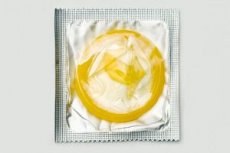New publications
Weed condoms will be thinner and stronger
Last reviewed: 02.07.2025

All iLive content is medically reviewed or fact checked to ensure as much factual accuracy as possible.
We have strict sourcing guidelines and only link to reputable media sites, academic research institutions and, whenever possible, medically peer reviewed studies. Note that the numbers in parentheses ([1], [2], etc.) are clickable links to these studies.
If you feel that any of our content is inaccurate, out-of-date, or otherwise questionable, please select it and press Ctrl + Enter.

Condoms have been around for quite a long time, and over time they have undergone more and more changes, and today, it would seem, scientists have already invented the thinnest and most durable ones. But Australian scientists have announced that they have managed to create even thinner and more durable contraceptives, and not from the usual latex or graphene (which, by the way, was also recently decided to be used for the production of condoms), but from a material that, at first glance, is completely unsuitable for this - triodia.
Triodia is a plant from the genus of cereals, growing in the deserts of Australia. Professor Darren Martin and a group of scientists from the University of Queensland suggested using this rather tough grass to make condoms. The specialists extracted nanocellulose from the plant, which improved the properties of condoms several times (nanocellulose is mixed with latex, as a result of which the polymer becomes stronger and acquires improved qualities).
A trial batch of nanocellulose condoms was manufactured specifically for Martin's group at an American latex manufacturing plant. The prototypes passed standard "burst" tests, in which condoms are inflated until the product bursts.
Tests have shown that triodie condoms can withstand 20% more pressure and 40% more maximum volume than regular latex products.
In a press release, Darren Martin noted that nanocellulose is a flexible additive that allows the membrane to be made more elastic, stronger and thinner. According to the research team, the new condom manufacturing technology will allow condoms to be made as thin as 0.045 mm, while the condoms will fully meet the required quality standards and outperform existing modern latex products.
It is worth noting that the development of Australian specialists has already attracted the interest of leading manufacturers of “rubber products”.
The new material with nanocellulose can be used not only for the production of contraceptives, but also for the production of the thinnest gloves that are used for medical purposes. According to scientists, such gloves will provide maximum sensitivity, in addition, hands will get tired less in them, which is especially important for surgeons, laboratory technicians, whose work requires increased precision.
Martin's group admitted that the indigenous people of Australia suggested using the prickly plant to make means of protection against sexually transmitted infections and unwanted pregnancy, although the Australians use the resin from the triodia as an adhesive.
By the way, the University of Queensland has entered into an agreement with the union of aboriginal peoples, according to which they are entitled to a certain share of the income received from the sale of the unique technology.
The experts also noted that if nanocellulose becomes widely used in the production of latex products, this will provide new opportunities for economic development in remote parts of Australia where triodia grows.
 [ 1 ]
[ 1 ]
